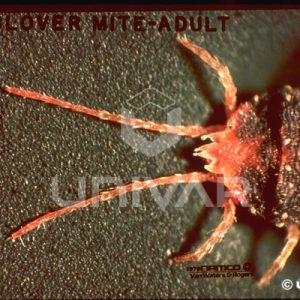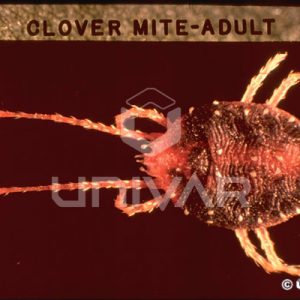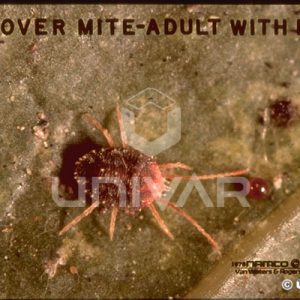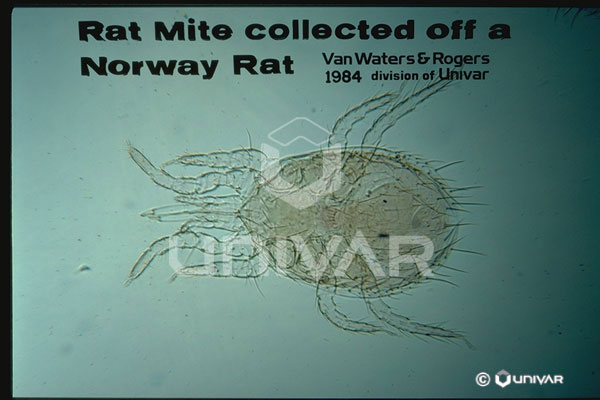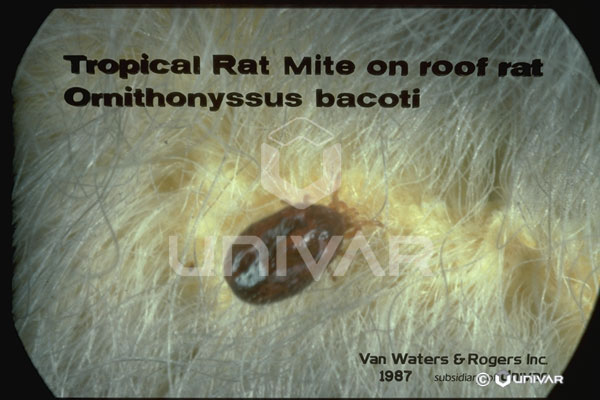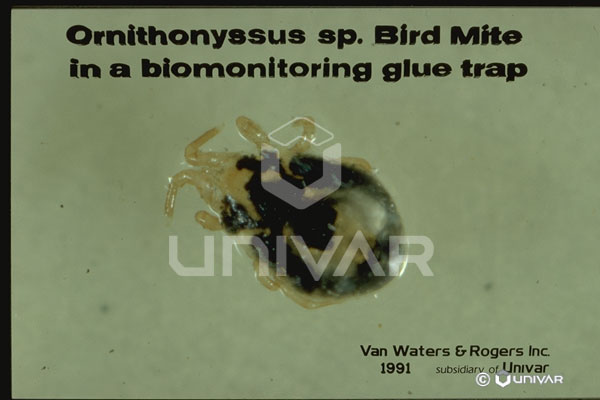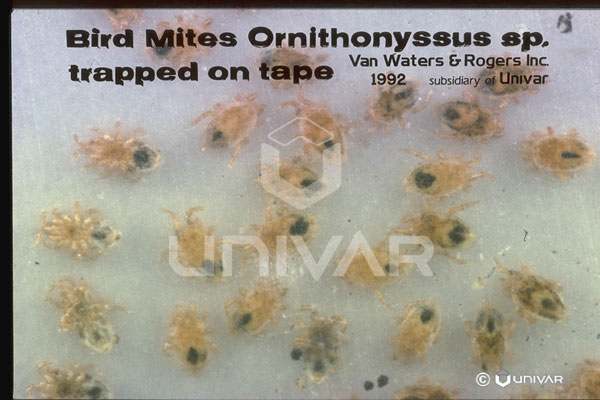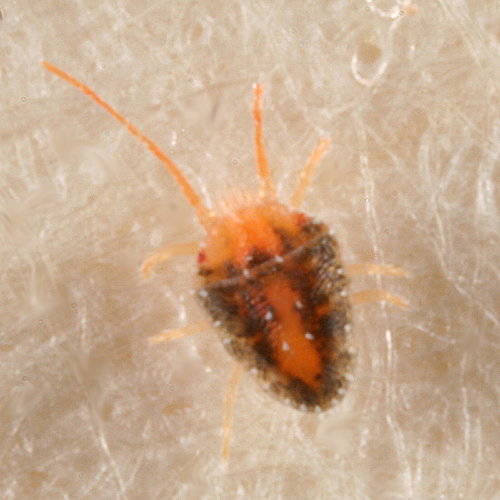
CLOVER MITE
Common Name: Mite – Clover mite
Latin Name: Bryobia praetiosa
Common Family Name: Prostigmatic mites
Latin Family Name: Tetranychidae
Other Names:
Origin: This is a native species of mite in North America.
Biology: The mites in this family are primarily plant parasites, and many of them are serious pests of crops and ornamentals. The clover mite feeds on many kinds of trees, shrubs, bedding plants, and turf, but does not bite humans. It becomes a problem when it invades structures in large numbers, especially during warm periods of the year. When crushed they leave small red stains on the surface. No male clover mites have been found, with females reproducing by parthenogenesis. Reproduction is rapid, with hundreds of thousands of mites being produced in a very short time. Eggs are laid in cracks on almost any surface, including trees and the outside of buildings. All stages of the mites may overwinter, although the egg stage is the most common.
Identification: The clover mites are easily distinguished from other mites by the relatively large size – 1 mm – very round, red body, and extremely long front legs that are held directly out to the front.
Characteristics Important in Control: Inside invasions can be controlled by vacuuming or applications of a residual pyrethroid insecticide. However, due to the staining potential of these mites indoors, it is better to prevent entry. Reduction of their populations outside can be done with applications of a labeled product on the infested foliage, as well as with perimeter applications around the exterior of a building to intercept migrating mites. Maintaining a strip of bare ground, without vegetation, around the perimeter of a building also helps to discourage their presence near the structure.
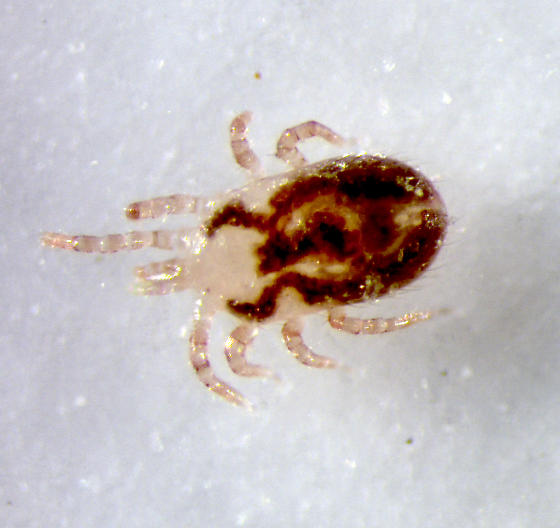
BIRD MITE
Common Name: Mite – Bird mites / Rat mites
Latin Name: Ornithonyssus
Common Family Name: Macronyssid mites
Latin Family Name: Macronyssidae
Other Names: Tropical rat mite, Northern fowl mite, Tropical fowl mite, bird mite, rat mite
Origin: Possibly Africa, as the Tropical rat mite was first recorded infesting rats in Egypt. These mites are now found throughout the world, although the Northern fowl mite (O. sylviarum) is more common in cooler climates, and the Tropical fowl mite (O. bursa) is more common in warmer climates.
Biology: These are parasitic mites that infest warm-blooded animals. As their common names imply they may have preferred hosts of rodents or birds, but in the absence of those hosts, or in heavily infested structures, they also bite humans. Distinguishing each kind to its species is very difficult, but identifying them to the genus level is an indication that the likely hosts also are present in the structure. None of these three species is implicated as an important vector of any diseases to humans, but their bites can be very painful and lead to itching, and irritated rashes. While sexual reproduction occurs the females also may reproduce parthenogenetically, without fertilization by males. The time from egg to adult mite is usually less than 2 weeks, with 4 or 5 blood meals taken during this growth period. The nymphs generally cannot survive more than 12 days without food, while adults may survive over 2 months without a blood meal.
Identification: The mites are distinguished from most other common, structural species by the very long legs and very long mouthparts. These long, pointed chelicerae and palps stick well out in front of the head region. The 8 legs are very long and well separated, allowing for good mobility by these mites. The body is oval, with the thorax and abdomen combined into a single segment without separation. The color is light grayish in unfed mites to reddish-orange in mites recently having had a blood meal. The fowl mites often seem to have a patchy, mottled appearance in dark areas.
Characteristics Important in Control: Control relies heavily on proper identification, and then discovery of and removal of the source, which will be nests of rodents or birds in or on the structure. If the source of the bird mites is determined to be nests of swallows on the exterior, extreme care must be given to the protected status of these birds. Inspection may be made using white paper or glue pads with a light background, and at least 20X magnification may be needed to make the identification. Once the source is eliminated it may be advisable to treat within attic or crawl space areas as well as within wall voids. Residual dust insecticides or pyrethroids labeled for void treatment can be effective.
